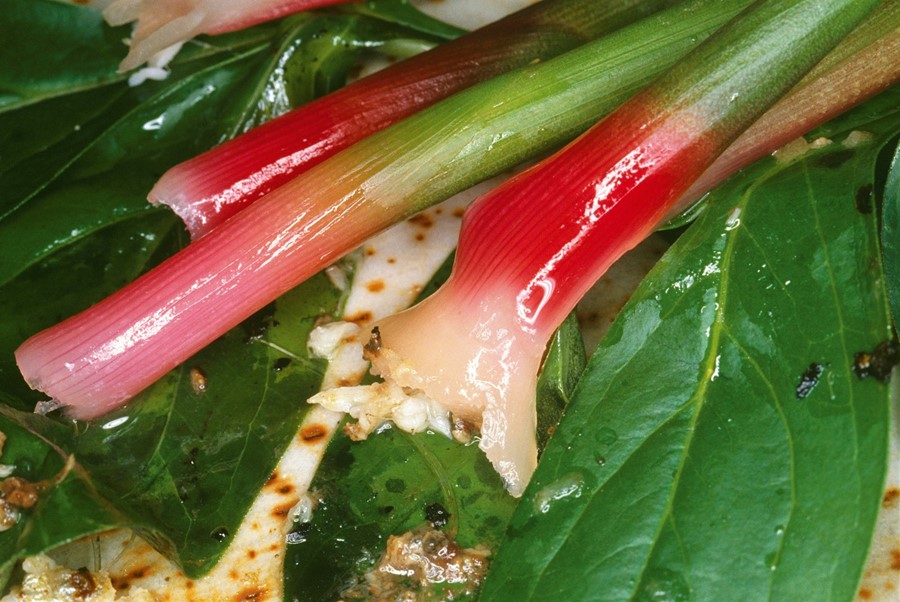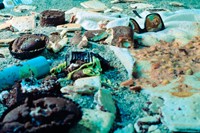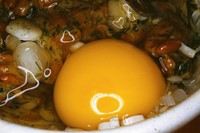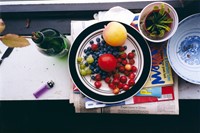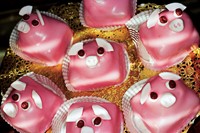A new show in Berlin explores representations of food in photography, through works by Wolfgang Tillmans, Martin Parr, Nobuyoshi Araki, and more
Food is one of life’s most basic requirements, and yet its symbolic potential is seemingly endless. It can be associated with luxury and excess, with poverty and deprivation, with gender and identity, with tradition and community or individual pleasure. It can be funny, sexual, rotten, enticing and so much more. Which is why, since the very dawn of photography, imagemakers, like painters before them, have been eager to explore both the visual and thematic potential of food as a subject. This itself forms the focus of a new exhibition at C/O Berlin, titled Food for the Eyes, exploring the story of food in photography from the late 19th century through today, and featuring works by some of the medium’s most celebrated names, as well as a number of lesser-known gems.
The show is divided into three sections, with each room painted a different shade of pastel. The first section considers food in the context of still-life photography and the many different approaches to the genre taken by different imagemakers over the years, from the traditional to the experimental to the subversive. A pepper, captured close-up in elegant monochrome by Edward Weston, takes on a sculptural, almost human quality; while Wolfgang Tillmans’ birds-eye view of a windowsill, complete with a plate of fruit, a pile of magazines, a plant, cigarette lighter and green glass bottle offers a contemporary take on the tabletop still life. A much-larger-than-life print, it forces us to pay attention to the details, and inherent beauty, of everyday objects. Four works by controversial Japanese photographer Nobuyoshi Araki – depicting various lubricious delicacies in garish hues – are both sensual and unnerving, highlighting food’s ability to incite both desire and disgust (in the case of overindulgence).
The second section is coined Around the Table and looks at “the ritual and sense of community that forms when food is shared, as well as the values and cultural identity they reflect”, as the exhibition text informs us. Highlights here include four close-ups of typically British culinary delights by Martin Parr – baked beans on toast; a plate of pig-shaped teacakes; a raspberry pavlova balanced atop jigsaw puzzle boxes, and an elderly man’s lap bearing a cup of tea and a fairycake – examining food as an indicator of cultural identity. Meanwhile, a typically intimate Nan Goldin snapshot of a picnic among friends, comprising of cake and cigarettes, encapsulates the simple joy of shared experiences centred around food.
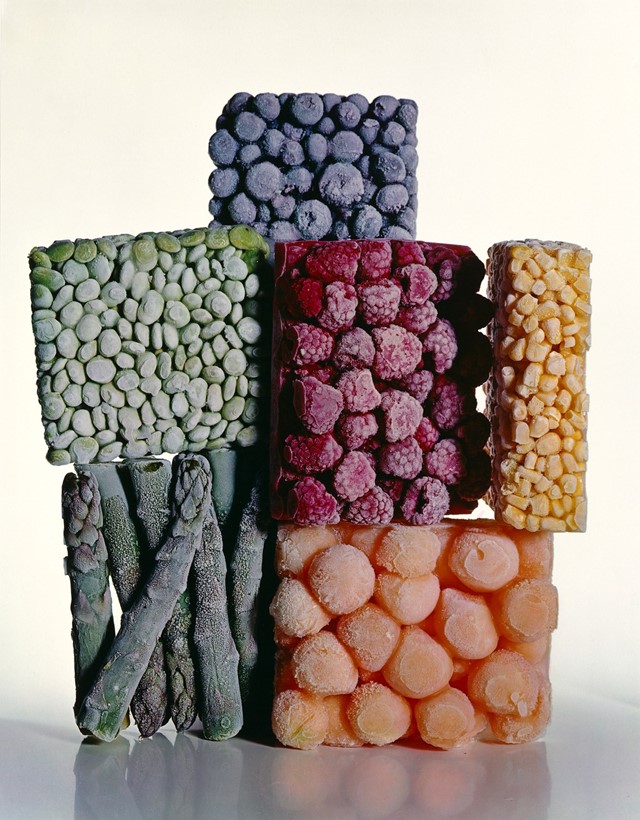
The final room showcases playful approaches to food in photography, featuring images that invite us to laugh at or interrogate societal values. Two powerful works by Hank Wills Thomas, from two separate series, see the artist remove the text and logos from advertisements featuring black men and white women respectively to demonstrate how both demographics have been commodified and stereotyped to sell products. Elsewhere, a large-scale image by Cindy Sherman from 1985 offers a rare example of a work where Sherman herself is not the main focal point. Instead, we see her distorted reflection in a pair of sunglasses among a hellish picnic tableaux on a beach, where unappetising, unidentifiable foods – including a pink spillage resembling vomit – are rendered in sickly bluish greens. Here food acts as “a loaded symbol of body image”, highlighting many women’s complicated relationship to what they eat. As a whole, the exhibition is a compelling investigation into food in the human experience, exploring its universality as much as its specific connotations, and unlocking important questions about how we live our lives. We are what we eat, after all.
Food for the Eyes is at C/O Berlin until September 7, 2019.
